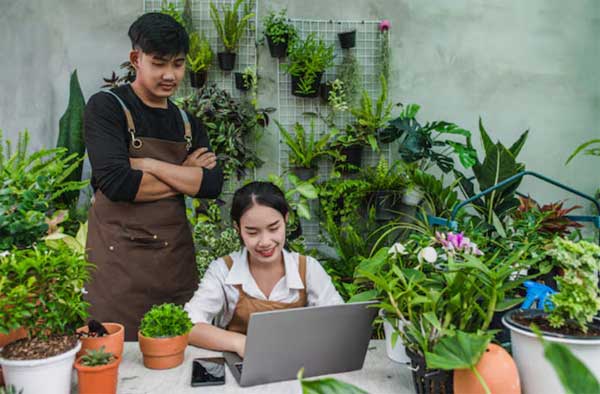
Gardening is more than just planting flowers or growing vegetables—it’s a lifestyle, a science, and a creative expression all rolled into one. Many aspiring gardeners and agronomists start their journey by searching for an Agronomy Practice Test to build foundational knowledge and prepare for careers in crop science. Whether you’re tending a small balcony garden, a backyard vegetable patch, or a community garden, gardening offers physical, mental, and environmental benefits.
The Benefits of Gardening
1. Physical Health
Gardening is a low-impact form of exercise that improves flexibility, strength, and endurance. Activities like digging, planting, and weeding work multiple muscle groups while also promoting cardiovascular health. Studies show that regular gardening can reduce the risk of obesity, improve posture, and increase overall energy levels.
2. Mental Wellbeing
Spending time in green spaces reduces stress, anxiety, and depression. Gardening encourages mindfulness, patience, and a sense of accomplishment. The process of nurturing plants and seeing them grow creates a profound sense of satisfaction and connection with nature.
3. Environmental Impact
Gardening contributes to environmental sustainability. Growing your own vegetables reduces your carbon footprint, conserves energy used for transporting produce, and promotes biodiversity. Pollinator-friendly gardens help bees, butterflies, and other beneficial insects thrive.
4. Nutritional Benefits
Homegrown vegetables and herbs are fresher, more flavorful, and more nutritious than store-bought produce. Gardening gives you control over pesticides and fertilizers, making it easier to maintain a healthy, chemical-free diet.
Types of Gardening
1. Vegetable Gardening
Growing your own vegetables is a rewarding way to improve nutrition and self-sufficiency. Common crops include tomatoes, peppers, lettuce, cucumbers, and root vegetables. Raised beds, containers, and vertical gardening are popular techniques for maximizing space.
2. Flower Gardening
Flower gardening adds beauty and aesthetic value to outdoor spaces. Popular flowers include roses, marigolds, tulips, and sunflowers. Flower gardens can also attract pollinators, creating a thriving ecosystem.
3. Container Gardening
Ideal for urban dwellers or small spaces, container gardening allows plants to thrive in pots, window boxes, and hanging baskets. It’s perfect for herbs, small vegetables, and decorative flowers.
4. Hydroponic Gardening
Hydroponics is a soil-free method where plants grow in nutrient-rich water. This technique saves space, conserves water, and allows year-round gardening indoors or in urban settings.
5. Community Gardening
Community gardens bring neighborhoods together, providing space for people without yards to grow their own food. These gardens promote social interaction, shared resources, and collective environmental stewardship.
Planning Your Garden
1. Assess Your Space
Determine how much space you have and what type of garden suits your needs. Consider sunlight, soil quality, and climate conditions.
2. Choose Your Plants
Select plants that thrive in your local environment. Consider factors like growing season, maintenance requirements, and compatibility with other plants.
3. Soil Preparation
Healthy soil is the foundation of a successful garden. Test your soil’s pH, nutrient content, and texture. Amend with compost, organic matter, or fertilizers to create optimal growing conditions.
4. Watering Systems
Efficient watering is crucial. Drip irrigation, soaker hoses, and rainwater harvesting systems conserve water and ensure plants receive consistent moisture.
5. Pest Management
Preventing pests is easier than treating infestations. Use companion planting, natural predators, and organic pesticides to maintain a healthy garden ecosystem.
Gardening Tools Every Gardener Needs
- Hand Trowel: Essential for planting and transplanting small plants.
- Pruning Shears: Keep plants healthy by trimming dead or overgrown branches.
- Garden Gloves: Protect hands from dirt, thorns, and pests.
- Watering Can or Hose: Ensure consistent hydration.
- Rake and Hoe: For soil preparation and weed control.
- Wheelbarrow: Makes transporting soil, compost, or plants easier.
Gardening Trends in 2025
1. Sustainable Gardening
Eco-friendly practices like composting, organic fertilizers, and water conservation are gaining popularity. Sustainable gardening minimizes environmental impact while promoting healthy plant growth.
2. Smart Gardening
Technology has entered the garden with sensors, automated irrigation systems, and smartphone apps that monitor soil moisture, sunlight, and plant health. Smart gardening helps optimize growth and reduces manual effort.
3. Indoor Gardening
Indoor gardens, including vertical gardens and hydroponic setups, allow gardening year-round. They’re perfect for urban apartments and spaces with limited outdoor access.
4. Native Plant Gardening
Planting native species reduces maintenance, attracts local wildlife, and supports ecosystem balance. Native plants are adapted to local climate conditions and are naturally resilient.
5. Pollinator-Friendly Gardens
Creating gardens that support bees, butterflies, and other pollinators is essential for food production and biodiversity. Planting a variety of flowering plants ensures continuous nectar and pollen sources throughout the season.
Gardening and Mental Health
Gardening has been shown to reduce cortisol levels, improve mood, and boost cognitive function. Horticultural therapy is used in hospitals and rehabilitation centers to promote healing and mental wellbeing. Simply spending time outdoors and engaging with plants provides relaxation and stress relief.
Conclusion
Gardening in 2025 is more than a hobby—it’s a lifestyle that improves physical health, mental wellbeing, and environmental sustainability. From vegetable patches and flower beds to rooftop gardens and hydroponic systems, there are countless ways to cultivate green spaces.




